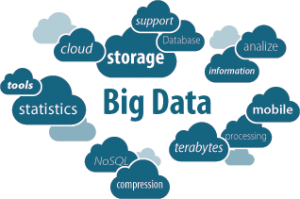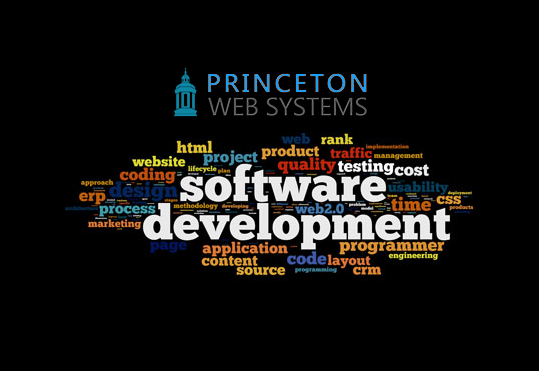Big Data Systems and Applications to Boost Your Business Success
Big Data Solutions
What is Big Data?
 Big Data is a term applied to data sets and technology stacks that exceed the processing capacity of traditional software tools. In most cases it means that data volumes, formats and sources don't allow to effectively capture, store, request and analyze the data in relational databases within a required elapsed time. Here are some symptoms that your current data technology, architecture or strategy fits into the Big Data category
Big Data is a term applied to data sets and technology stacks that exceed the processing capacity of traditional software tools. In most cases it means that data volumes, formats and sources don't allow to effectively capture, store, request and analyze the data in relational databases within a required elapsed time. Here are some symptoms that your current data technology, architecture or strategy fits into the Big Data category
- Frequent write operations lock data records and block reading operations. An increasing data volume affects retrieval operation timing so that a search or extraction of business data can't be completed within appropriate time limits;
- Your IT guy says that adding new fields to the table will require more than a month of testing as it affects all the systems involved in the data table and requires changes in data models;
- You have to procure new hardware with a more powerful CPU, hundreds of gigabytes of memory to process your data in time.
If you see any of these symptoms you’re certainly dealing with Big Data. In that case, Big Data Technologies might help you.
Big Data technology stacks allow to effectively capture, store, select and process data of big volume, variety and velocity. These technologies were invented by internet giants such as Yahoo, Google and Facebook because they first dealt with unstructured data on a large scale. Several key terms and principals are the backbones of the Big Data technologies
NoSQL Systems
- Document-oriented
- Series of key-value pairs is an equivalent of column/rows in relational databases
- Structure of data record is not predefined. It allows to add/remove "columns" with no penalty and gives architects more flexibility and fewer limitations
- MongoDB, CouchDB, Cassandra, Redis, BigTable, HBase, Hypertable, Voldemort, Ryak and others
Map Reduce
- Algorithm Design Pattern
- On the "Map" stage of the algorithm, the programming task divides into several sub tasks with the ensuing sub-task distribution closer to data location
- On a "Reduce" stage, the results from the sub-tasks are combined into result value
Key-Value Storages (including in-memory caches)
- Simple interface
- Predictable performance
- Effective building block of any system
- MemCache, Redis at some extent, Oracle Coherence, Gemstone, Gigaspaces, NCache, Teracotta and others
Horizontal Scaling
- System running effectively on a cluster of cheap low-spec servers
- Scaling is simple: adding more low-spec servers allows to process lager volume of operations
- Writing speed/data consistency dilemma
- Achieved mostly due to MapReduce algorithm implementation
- Hadoop, GridGain, Hazelcast
Big Data Projects
Data volumes grow exponentially. Its growth is caused by the increasing number of systems and people acting as data sources of textual, verbal, video and transactional information. This data contains insider information and patterns previously hidden due to lack of proper technologies. Organizations which can unlock these troves of information, analyze it and build new products will gain almost unlimited benefits. Princeton Web Systems has helped many organizations in achieving this goal through implementation of Big Data systems.
Our projects include:
- Data Processing and analytics with Apache Hadoop, Cloudera's distribution of Hadoop, GridGain, Hazelcast, R, Matlab, Hive, Pig
- Solutions for Publishing, Travel and Financial industries built with
- NoSQL databases, such as MongoDB, CouchDB, Redis, HBase
- Fast search with Solr and ElasticSearch for Apache Lucene
- Distributed web crawling systems
- Distributed log processing with Splunk
- Social Web mining, Text Mining with NLTK, OpenNLP, steaming Twitter and Facebook API
- Research projects on Windows Azure with Hadoop
Implementation Approach
With our growing experience in Big Data technologies we will help you:
- Build more transparent systems
- By simply making data available in a timely manner businesses can improve security and safety of their systems, reduce search & processing time, improve effectiveness of resource management, save energy and help meet customer expectations
- Identify customers and determine population segmentation to customize your decisive actions according to the needs of a specific sector
- Tailor products and services for client's needs
- Implement real-time micro-segmentation
- Treat customers in a personalized way
- Replace or improve human decision with algorithms where appropriate
- Find hidden insights affecting decision
- Automatically fine tune your inventories, expenses, logistics, pricing, etc.
- Build innovative businesses with new data products available in the emerging marketplaces such as Infochimps, Windows Azure Data Marketplace or DataMarket
Industries Set to Benefit from Big Data
Many industries are set to benefit from the analysis of large volumes of private historical data. Analysis of data from social networks, internet texts and documents, real-time market data, RFID, large-scale e-commerce transactions, medical records, call and search statistics, photography and video archives as well as scientific research could unlock unlimited benefits for these industries.
Financial Services
- Social media–based strategies for predictive analytics
- Analyze social media to find hidden patterns in customer behavior
- Build contextual strategies based on social media, weather, transactions, calls, messaging contexts to support trading decisions
- Fraud detection based on analysis of years of transactional data
- Detecting false information
- Consuming and analyzing close-to-real-time vs. end-of-day data market data
Logistics
- Gain valuable insights into customer shopping patterns beyond confirmed bookings based on web logs and personal activity analysis
- Unlock insights on loads integrity , transit times, dwell times through the trailer tags analysis
- Adjust inventory according to social media analysis of attitudes towards specific products and services
- Review fuel consumption patterns and develop route optimization strategies
Manufacturing and Energy
- Save energy with transparent energy usage monitoring, by retrospective analysis of energy consumption in devices with data from sensors
Healthcare
- Real-time analysis of psychological streams, healthcare needs of various population sectors based on search statistics, trends, messages, tweets
- Predictive analytics of epidemics through searches, transactions and messages analysis
Retail
- Tailoring products and solutions to clients' needs based on their online activity, geographical location, weather conditions, media environment status
- Improve recommendations and advertisements based on better customer segmentation
Digital Publishing
- Deliver relevant content to the appropriate customer segment at the right time
- Deliver personalized content in real time



